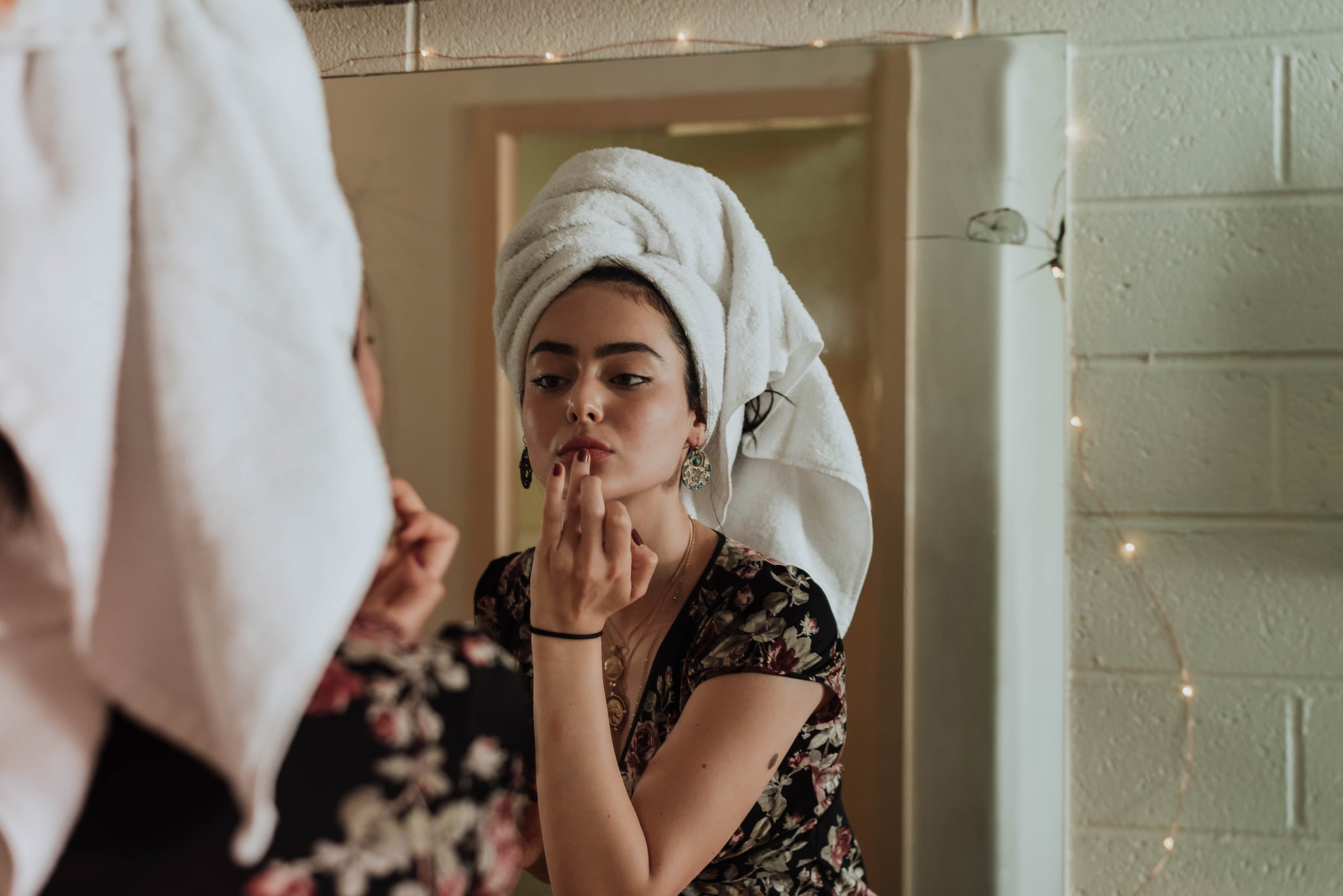The 1 Way You Can Tell Whether You've Got a Zit or a Cold Sore

When it comes to acne, some spots can cause more anxiety than others. True, no one’s ever excited to get a pimple, but there’s a special kind of dread about the ones that pop up around your mouth. If you notice a pimple on your lip line or around the corner of your mouth, you might be wondering whether it’s just a run-of-the-mill acne spot or if it could possibly be a cold sore. While cold sores and pimples can look similar in the beginning, there are a few key ways you can tell them apart. We asked NYC dermatologist Howard Sobel, MD, about the telltale way to determine what’s really going on and how to treat whatever the issue may be.
Cold sores are tiny blisters that can form around the mouth — and they’re not uncommon. According to the American Academy of Dermatology Association (AAD), more than half of Americans age 14 to 49 carry the herpes simplex virus (HSV) that causes cold sores. It’s easy to catch this virus as a child, as it can be passed through saliva or skin-to-skin contact. While the virus will stay in your body even after your first outbreak clears up, and there’s a chance it may flare again, some people never show symptoms after their initial bout with HSV. However, both stress and sun exposure can provoke an outbreak.
As previously mentioned, cold sores are contagious. This means you can spread the virus any time you have an outbreak — even if you’re actively treating it. According to the AAD, you run the risk of spreading HSV until your sores have scabbed over.
Since little blisters often resemble pimples, it might be hard at first to discern the difference. “Pimples that pop up right near the mouth are often confused with cold sores, but the two are actually pretty easy to differentiate if you know what to look for,” Dr. Sobel says.
Cold sores typically emerge smack dab on the lip, however, they can also emerge around the lips, on the nose or nostrils, and around the eyes. “A pimple may pop up around your chin or mouth but never directly on your lip,” Dr. Sobel says. Also, unlike pimples, cold sores are often made up of tiny clusters. The “number one sign” that you’re getting a cold sore rather than a pimple? According to Dr. Sobel, “You’ll usually feel itching and burning at the site of a cold sore, rather than just a little discomfort with a pimple.”
In general, a cold sore will last longer than a pimple. Luckily, there are ways to speed up the healing process. “Since cold sores stem from a virus, they are treated with antiviral medications and cream,” Dr. Sobel explains. If you’re uncomfortable but not in too much pain, the dermatologist recommends dabbing cold sores with a drugstore lip balm to reduce side effects, which include burning, redness, and irritation. If the pain is extreme, consider visiting your primary-care doctor. “For more severe cases, I recommend seeing a dermatologist to prescribe stronger medication such as Valtrex to treat current cold sores as soon as you feel the tingling,” Dr. Sobel says.
If you’ve come to the conclusion that what you have is just a pimple near your lip, the next step is knowing how to properly treat it. When it comes to pimples around the mouth, you want to make sure you’re being gentle. Try not to pick or poke, especially with your fingers. If the pimple is painful, try using a hot or cold compress to soothe it. Try to wash your face twice per day, especially after working out or sweating heavily. When purchasing acne-fighting treatments, look for products that contain benzoyl peroxide or salicylic acid, as these are the gold standard for treating acne.
Source: Read Full Article
